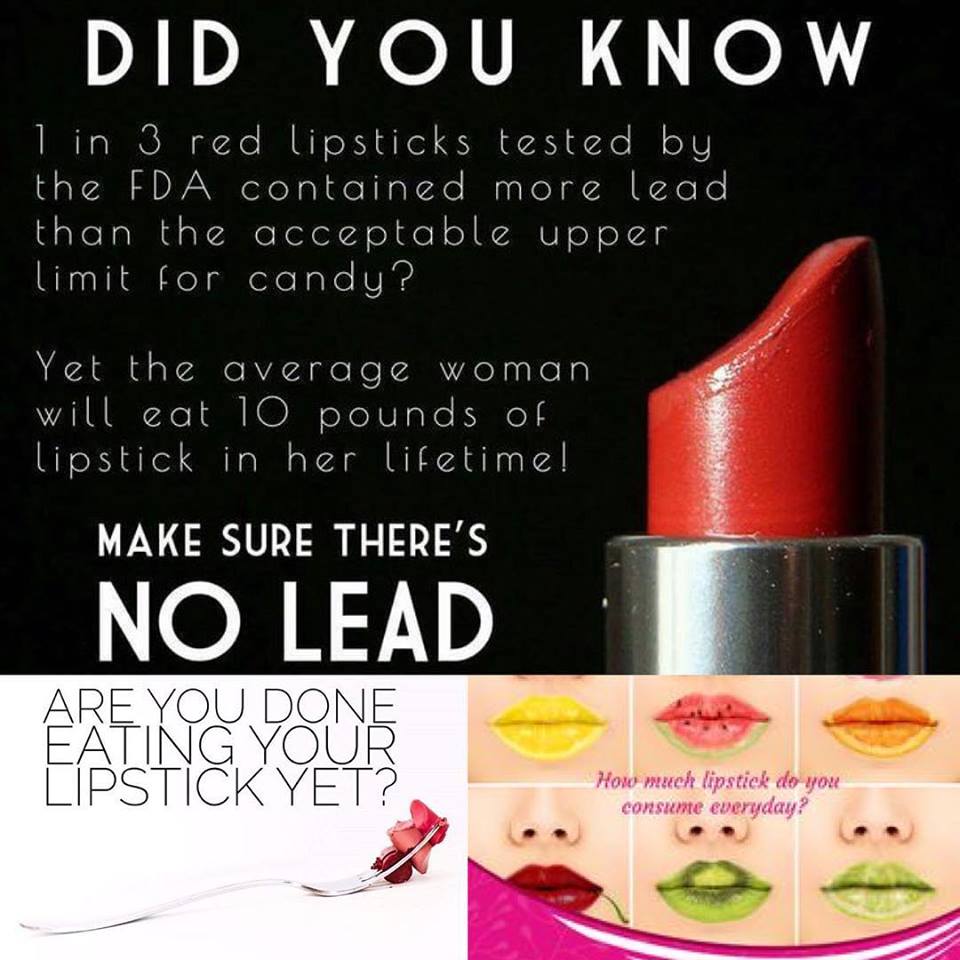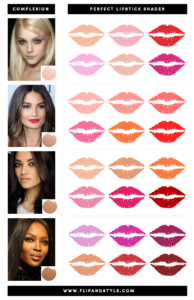This Site Is A Participant In The Amazon Services LLC Associates Program. We may earn money or products from Amazon or the companies mentioned in this post.
A woman may consume about 4 to 9 pounds of lipstick in her lifetime. This occurs mainly through regular application and eating.
Lipstick is an essential beauty product for many women. Applied daily, it often gets ingested unintentionally. While the exact amount varies, studies suggest women consume several pounds over their lifetime. The regular application and constant reapplication contribute to this gradual intake.
Though the amount seems alarming, lipstick is generally safe. Manufacturers ensure that ingredients meet safety standards. This inadvertent consumption highlights the importance of choosing quality products. Awareness of ingredients can help in making better choices. Lipstick remains a beloved beauty staple despite this minor drawback.

Credit: www.reddit.com
Daily Lipstick Consumption
Have you ever wondered about the amount of lipstick a woman eats daily? Lipstick can be ingested without realizing it. This happens through daily activities like eating and drinking. Let’s explore this further.
Average Usage
On average, women apply lipstick multiple times a day. Each application can leave a small amount on the lips.
Here is a table showing average lipstick usage:
| Activity | Times per Day |
|---|---|
| Applying Lipstick | 2 – 4 |
| Reapplying Lipstick | 1 – 3 |
Unconscious Ingestion
Unconscious ingestion happens without noticing. It occurs through regular activities like eating and drinking.
The amount of lipstick ingested daily might surprise you. Studies suggest a woman may consume up to 24 milligrams of lipstick each day. Over a year, this can add up significantly.
- Eating and drinking can cause lipstick ingestion.
- Daily activities contribute to unconscious ingestion.
Understanding lipstick ingestion is important. It helps in choosing safer products. Look for lipsticks with natural ingredients.
Ingredients In Lipstick
Lipstick is a staple in many makeup bags. But what exactly goes into it? Understanding the ingredients can help you make better choices. Let’s explore the common components and potential health risks.
Common Components
Most lipsticks contain a mix of waxes, oils, and pigments. These ingredients help provide texture, moisture, and color. Below is a table showing some common ingredients:
| Ingredient | Function |
|---|---|
| Beeswax | Provides structure and solidity |
| Castor Oil | Provides moisture and smooth application |
| Lanolin | Acts as a moisturizer |
| Carnauba Wax | Gives a glossy finish |
| Pigments | Adds color |
Potential Health Risks
Some lipstick ingredients might pose health risks. Lead is a common concern. Even tiny amounts can be harmful. Parabens are used as preservatives but may cause issues. Fragrances can trigger allergic reactions in sensitive individuals.
Here are some potential risks:
- Lead: Associated with neurotoxicity.
- Parabens: Potential hormone disruptors.
- Fragrances: Cause allergic reactions.
It’s essential to read labels carefully. Choose lipsticks free from harmful ingredients. Your health and safety should always come first.
Scientific Studies
How much lipstick does a woman eat? This question has intrigued many. Scientific studies provide some answers. Researchers have examined the ingredients and usage of lipstick to estimate intake.
Research Findings
Studies show women apply lipstick daily. They often reapply multiple times a day. This leads to ingestion of small amounts over time.
A study found that women who apply lipstick 2-3 times a day consume around 24 milligrams of lipstick. This can add up over a year.
Another research indicated that lipstick contains various chemicals. Some of these might not be safe in large quantities.
Estimated Intake
The average woman might eat up to 3 pounds of lipstick in her lifetime. This estimation varies based on usage habits and lipstick types.
Below is a table showing estimated intake:
| Usage Frequency | Estimated Intake (per year) |
|---|---|
| Daily (2-3 times) | 24-30 milligrams |
| Occasional (once a day) | 10-15 milligrams |
| Rare (few times a month) | 5-8 milligrams |
These numbers highlight the surprising amount of lipstick ingested. Awareness can help make safer choices.

Credit: stellamarrs.com
Health Implications
Many women wear lipstick daily. But do they know the health risks? Eating small amounts of lipstick happens with each application. This may cause health issues over time. Let’s explore the potential health implications.
Short-term Effects
In the short term, eating lipstick may cause minor issues. These include:
- Stomach upset: Some ingredients can irritate the stomach lining.
- Allergic reactions: Some women may react to certain chemicals.
- Skin irritation: Lipstick can cause rashes around the mouth.
While these effects are usually mild, they can be bothersome.
Long-term Concerns
Long-term ingestion of lipstick may pose more serious health risks. Some of these risks include:
- Heavy metal accumulation: Many lipsticks contain lead and cadmium.
- Hormonal disruption: Certain chemicals may affect hormone levels.
- Chronic health issues: Long-term exposure may increase disease risk.
Research shows that small amounts add up over time. This can lead to significant health concerns. Below is a table summarizing these risks:
| Potential Risk | Description |
|---|---|
| Heavy metal accumulation | Lead and cadmium build up in the body. |
| Hormonal disruption | Chemicals like parabens affect hormones. |
| Chronic health issues | Long-term exposure may increase disease risk. |
These risks highlight the importance of choosing safe, non-toxic lipsticks. Always read labels and opt for natural products when possible.
Safer Alternatives
Many women wonder about the safety of their lipstick. This concern arises because lipstick can be ingested. To reduce health risks, consider safer alternatives. These alternatives ensure you still look great while staying safe.
Natural Options
Choosing natural lipstick options can minimize health risks. Look for lipsticks made from organic ingredients and natural dyes. These products often contain plant-based oils and beeswax.
Here are some natural ingredients to look for:
- Coconut oil
- Shea butter
- Beetroot powder
- Carnauba wax
These ingredients are safe and provide nourishment to your lips. They also avoid harmful chemicals found in many commercial lipsticks.
Consumer Tips
Being an informed consumer helps you choose safer lipsticks. Check the ingredient list on products. Avoid lipsticks with parabens and synthetic fragrances. These can be harmful if ingested.
Here are some tips for choosing safer lipsticks:
- Read labels carefully.
- Choose brands that use natural ingredients.
- Avoid products with long chemical names.
- Look for certifications like USDA Organic.
Also, consider making your own lipstick at home. This ensures you know exactly what goes into your product.
Here’s a simple homemade lipstick recipe:
| Ingredient | Quantity |
|---|---|
| Beeswax | 1 teaspoon |
| Coconut oil | 1 teaspoon |
| Shea butter | 1 teaspoon |
| Beetroot powder | 1/2 teaspoon |
Melt the beeswax, coconut oil, and shea butter together. Add beetroot powder for color. Pour into a small container and let it cool.
These steps ensure your lipstick is safe and natural.

Credit: www.klaireorganic.com
Frequently Asked Questions
How Much Lipstick Does A Woman Consume Yearly?
On average, a woman consumes about 3 to 7 pounds of lipstick in her lifetime. This translates to approximately 0. 15 pounds per year.
Is Lipstick Consumption Harmful?
Most lipsticks are safe and regulated. However, consuming large amounts over time may have minor health risks due to certain ingredients.
What Ingredients In Lipstick Are Consumed?
Common ingredients include waxes, oils, pigments, and emollients. Some lipsticks may contain trace amounts of lead and other metals.
How Can Lipstick Consumption Be Reduced?
To reduce consumption, apply lipstick less frequently, choose long-lasting formulas, and avoid licking your lips.
Conclusion
Understanding lipstick ingestion highlights the importance of product safety. Choose quality brands to minimize potential risks. Remember, moderation is key. Always prioritize your health and well-being. By being informed, you make safer beauty choices. Stay beautiful and healthy, inside and out.

Amelia Varley is a professional beauty blogger and freelance writer with a passion for all things skincare, makeup, and holistic wellness. With years of experience in the beauty industry, Amelia shares expert tips, product reviews, and innovative beauty routines with her readers. Her writing is driven by a desire to empower people to look and feel their best through mindful beauty practices. When she’s not writing, Amelia enjoys experimenting with the latest beauty trends and exploring the connection between self-care and confidence.





